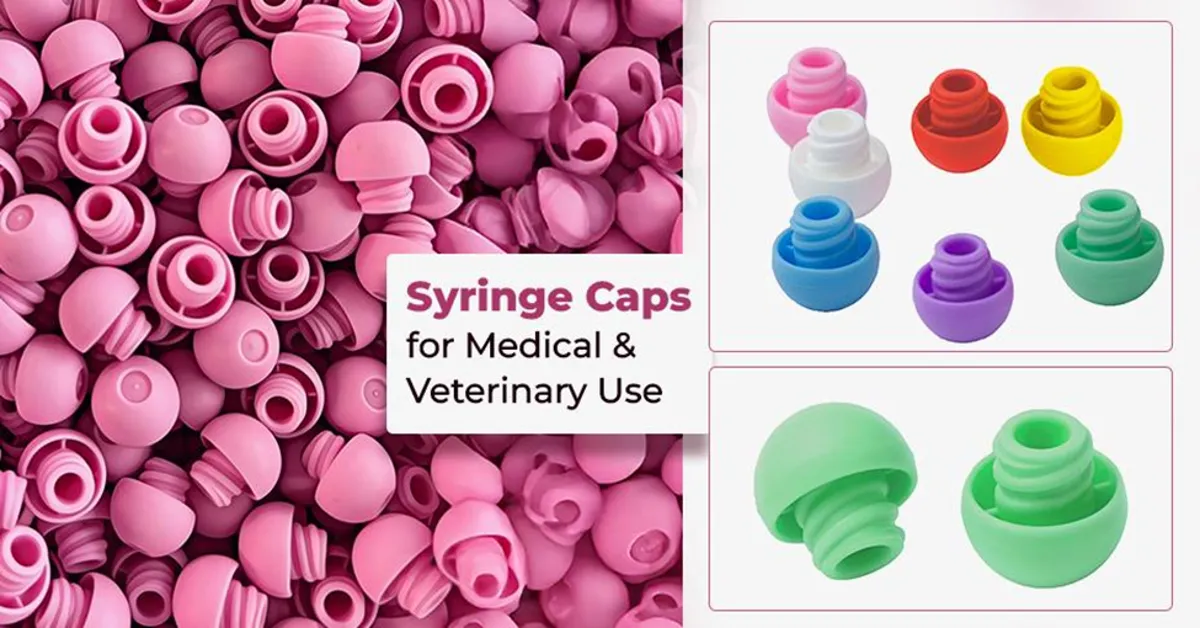Syringe caps may not seem like a big deal, but in a medical lab, veterinary clinic, or even in a mobile field unit, they are an essential part. Sterility is maintained, leaks are avoided, and no one (including animals) is exposed to contamination by these tiny plastic or rubber items.
However, not every syringe cap is the same. Certain ones work better for transferring fluid, and others for long-term storage. Some are designed better for luer lock systems, others for slip tips. And anyway, the wrong cap can mess up all your operation.
Let’s have a look at 8 tips over how to choose the best syringe caps in medical and veterinary use.
1. Know Your Syringe Type First
The first thing to clarify before you even consider caps, is what type of syringes you are using. Are they luer lock? Luer slip? Catheter-tip? Eccentric? Each of these has a different tip style and needs a matching cap.
Using the wrong cap can lead to leaks, compromised sterility, or just straight-up frustration when it doesn’t fit. Compatibility is key.
2. Prioritize Sterility
Sterility can not be compromised in any case in medical or veterinary practice. Caps need to come in sterile packaging—either individually wrapped or in clean, sealed trays.
Look for the clear labeling. Don’t take the risk where you can see that the packaging is sketchy or unclear. Saving a few dollars is not worth cross-contamination.
3. Go With Material That Matches Your Application
Plastic? Rubber? Silicone? Every material offers its benefits.
Polypropylene caps are good all round. Long-lasting, affordable and accessible.
Silicone or rubber would provide improved sealing to long-term or pressure-sensitive tasks.
Also, make sure that the material is not reactive with whatever was in your syringe – especially with the case of meds, vaccines, or other biological samples.
4. Look for Tougher Designs
Vet clinics have rougher environments, animals are unpredictable, the environment is messy and timeframes tight. Rugged caps with tight seals are a big deal in this case.
Leak-proof designs or caps with locking features can tolerate more in an active vet clinic.
5. Choose Between Reusable and Disposable
Every syringe cap does not always need to be disposed of after a single use. Reusable syringe caps can be cost-effective and result in less wastage because they are designed using autoclavable materials.
Reusability only makes sense when your facility incorporates proper sterilization procedures. Without that, disposable is the safer option all day every day.
6. Pay Attention to Color Coding
This might seem cosmetic, however color-coded syringe caps will assist you in getting organized quickly–particularly when dealing with multiple medications or sample types. Those minor color variations can be invaluable in an emergency or high stress setting.
Some facilities also follow specific color standards for fluids, medications, or departments. Your choice of caps must always correspond to your internal labeling system.
7. Bulk Ordering? Sample First.
Need to order a new batch for your clinic or lab? Don’t go all-in without testing. Many suppliers offer small sample packs—use them.
Check:
- Fit on your syringes
- Ease of application/removal
- Seal integrity
- Packaging quality
You do not want to receive a box of 5,000 to find out they do not stick or are impossible to remove with gloves on.
8. Do Proper Research
If you are buying from a medical distributor or sourcing supplies for veterinary use, do not overlook supplier research.
Check for:
- Product certifications
- Sterility guarantees
- Reviews from real-world users
- Support for product questions
When lives—human or animal—are at stake, you want to be sure your supplies come from a reliable source.
The Role of Syringe Caps in Broader Safety Protocols
A little thing like a cap can be forgotten, however the overall context of lab or clinic safety syringe caps are a part of an important line of defense. They help prevent exposure to medication, reduce waste due to spills, and lower contamination risks for both healthcare workers and patients.
Final Thoughts
Syringe caps may not be the star of the show. They do loads of invisible work to ensure smooth and safe operations in healthcare and veterinary businesses.
Choosing the right ones doesn’t have to be complicated—but it does have to be intentional. Understand your tools, your needs and avoid corners with quality. Because when you’re dealing with life-saving meds or sensitive biological materials, every detail matters.
FAQs
Q: Are all syringe caps universal?
A: Nope. Syringe tips vary. You’ll need luer lock caps for luer lock syringes, and different options for slip tips, catheter tips, etc.
Q: Can I reuse syringe caps?
A: Only if they’re designed for reuse and properly sterilized. If in doubt, go disposable for safety.
Q: Do color-coded caps mean anything specific?
A: Not universally, but many hospitals and clinics create internal systems. Some associate color with medication type, department, or urgency.
Q: Can I use veterinary syringe caps for medical syringes?
A: Sometimes, yes—especially if they’re certified for medical-grade use. But always double-check the specs and standards before cross-use

